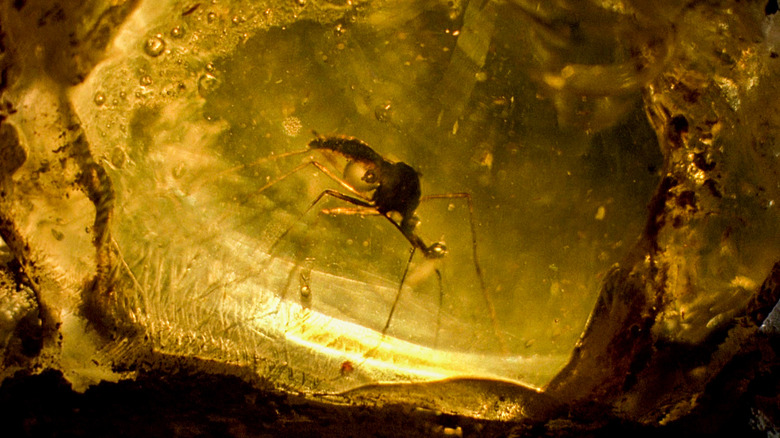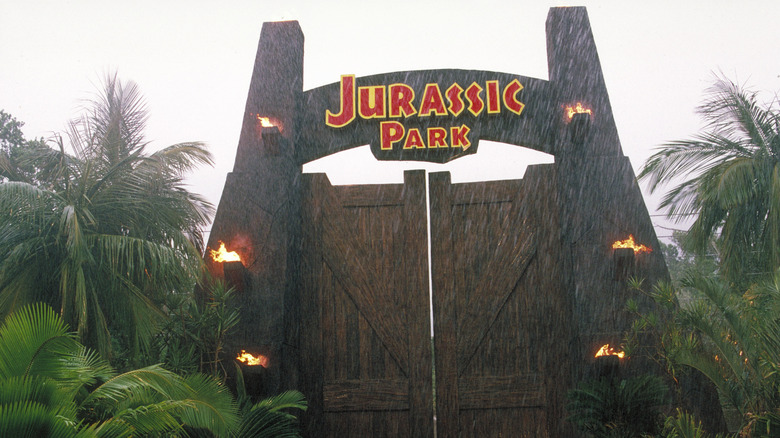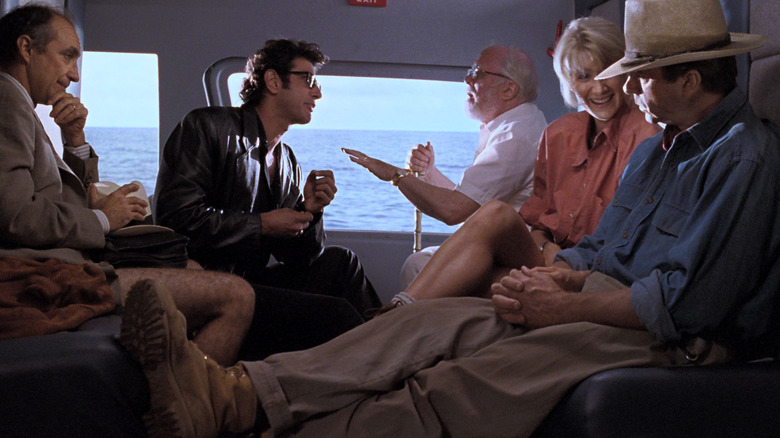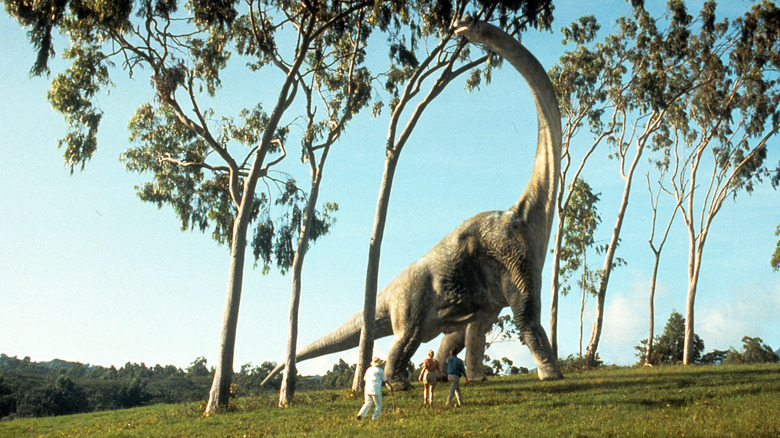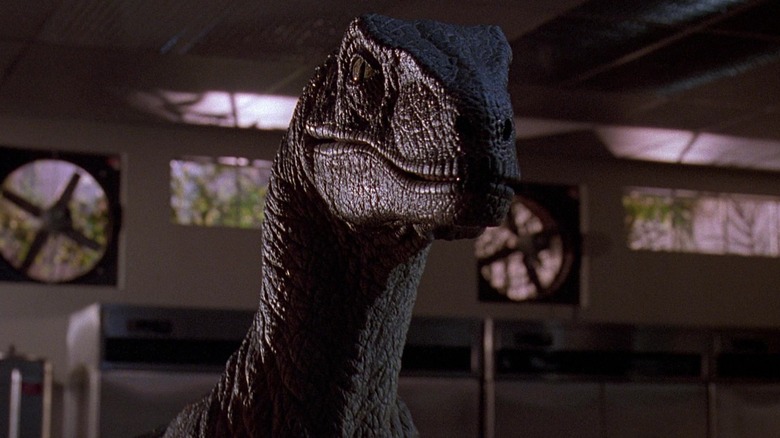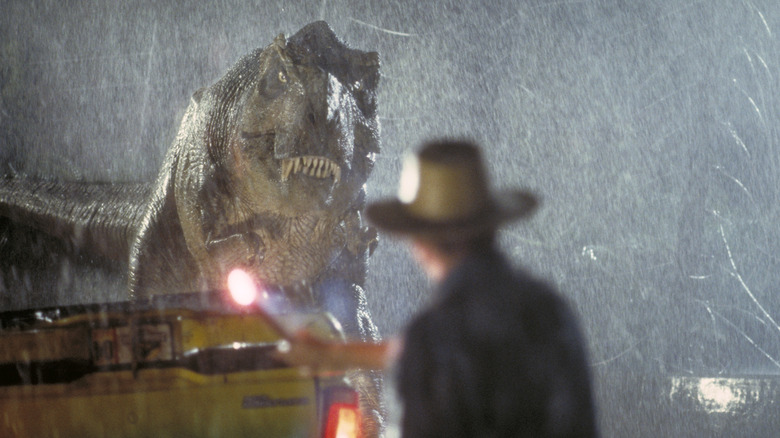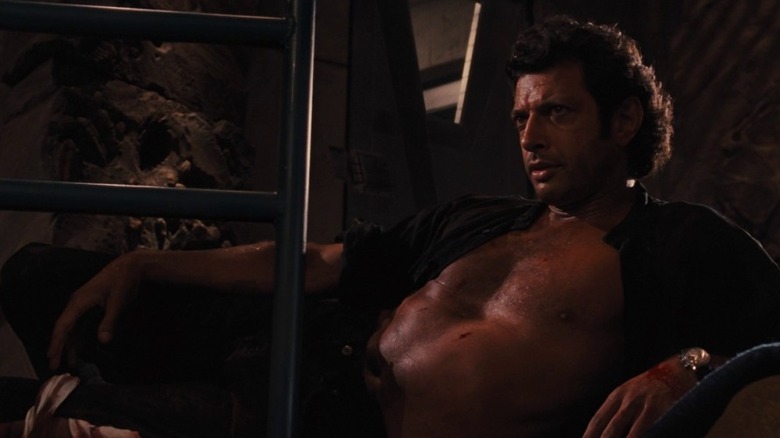Tales From The Box Office: 30 Years Ago, Jurassic Park Changed Movies Forever
(Welcome to Tales from the Box Office, our column that examines box office miracles, disasters, and everything in between, as well as what we can learn from them.)
There are big movies, there are important movies, and there are timeless movies. But everyone once in a while, a movie comes along that is so significant on just about every front that it becomes both a timeless classic and a point of no return for the industry at large. One such moment occurred in the summer of 1993 when Steven Spielberg unleashed one of the most successful entries in his storied career, "Jurassic Park."
To this day, the film plays like gangbusters and stands alongside the likes of "Jaws" and "Raiders of the Lost Ark" as one of the most enduring blockbusters ever made. More than that though, even if it was sort of by accident, Spielberg ended up laying out a template for the future of cinematic storytelling in bringing dinosaurs to life on the big screen. Through a combination of groundbreaking animatronics and (more importantly) pioneering computer-generated imagery, he managed to make extinct animals feel more real than anyone previously thought possible. Moreover, from that point on, just about anything any filmmaker could dream of would become possible — technology was no longer the premier limitation.
The old ways were extinct in an instant.
In honor of the movie's 30th anniversary, we're looking back at "Jurassic Park," how Spielberg won the rights to make the film in a competitive bidding war, how the groundbreaking CGI dinosaurs came to be, the many problems the production had to overcome on its way to the big screen, what happened when the movie finally hit theaters, and what we can learn from the film all these years later. Let's dig in, shall we?
The movie: Jurassic Park
The journey of "Jurassic Park" begins with author Michael Crichton ("The Andromeda Strain," "Sphere"), who had already established himself as one of the premiere science fiction authors of his day. Interestingly, Crichton actually first wrote a screenplay about a genetically-modified dinosaur but wasn't happy with the result. He eventually circled back to it as a novel but even from the inception of the idea, it was conceptually cinematic.
Crichton and Spielberg's collaborated on the wildly successful series "ER" (which was originally written as a movie), and that partnership ultimately paved the way for the "Jurassic Park" deal. Spielberg read the novel and he was immediately interested in adapting it for the screen. The only problem? Spielberg wasn't alone. There was a pretty fierce bidding war, with James Cameron ("Aliens") pretty famously trying to snatch up the rights as well. Ultimately Crichton went with Spielberg and Universal Pictures, scoring a hefty $1.5 million fee in addition to a percentage of the film's profits. Spoiler alert: there would be lots of profits.
The author took a stab at the script himself, though much of Crichton's original draft didn't actually make it to the screen. Instead, David Koepp ("Death Becomes Her") was tapped to rewrite the source material for the screen. Koepp, speaking in 2016, explained that Spielberg wasn't willing to limit the script based on what may or may not have been possible at the time. He said:
"I wrote a line in one of my first drafts that said 'The T. rex bursts out of the trees, chases down the Gallimimus, and devours it in a cloud of dust and blood.' I thought, 'Well I love that line, and I'd love to see that.' But I asked Steven, 'This seems impossible to me, should I take it out? Should I do it another way? What are my limitations?' and he said, 'Your imagination, that's the only limit you have. We'll figure it out.'"
A brave new world
It's incredibly important to remember what was possible around this time in the early '90s. Computers were a mere fraction of what they are today and computer-generated imagery was only just starting to make its way into movies, like the T-1000 in "Terminator 2: Judgment Day." But the only reason "Jurassic Park" works (or maybe doesn't) is the dinosaurs. Be that as it may, Spielberg felt he could pull it off using a combination of animatronics and stop-motion animation.
Spielberg was inspired by Universal's "King Kong" attraction that featured an impressive animatronic Kong. He felt perhaps that technology could be furthered to make the full-size dinosaurs for the film. Legendary makeup/effects artist Stan Winston and his team were chosen to head up the animatronics. However, since the animatronics were only suitable for more intimate shots. The original plan was to utilize stop-motion for the wide shots. That's where the legendary visual effects artist Phil Tippett — famously credited as the "dinosaur supervisor" in the film — came into play.
Winston and his team spent months crafting the real dinos for the film, such as the T-rex, velociraptors, and triceratops. Meanwhile, Tippett and his team were trying to make stop-motion look more real than it ever had before. But a pair of forward-thinking special effects artists in the form of Steve 'Spaz' Williams and Mark A.Z. Dippe had plans of their own.
"Mark and I just right away say, 'Why don't we just build the creatures in computer graphics?'" Williams said in an episode of Netflix's "The Movies That Made Us." But this was 1991 and there was skepticism. "Nobody really believed yet. Or let's say, everyone was afraid," Dippe said. "It was termed as being impossible," Spaz added. "I especially knew I was right when they said it was impossible."
'It's a dinosaur'
Williams did not officially have the go-ahead to make a CGI dinosaur, but he did it anyway. It all started with the CGI bones of a T-rex, but that was enough to demonstrate that this was all possible. Once he showed this unsanctioned test to Spielberg and producer Kathleen Kennedy, the path was clear. Stop-motion was abandoned in favor of computer animation, which would be used in concert with Winston's animatronic creations. Unfortunately, this new direction initially served as a pretty huge blow to Tippett. From "The Movies That Made Us" episode:
"I actually said, 'Well, that's the future, that's the way it's going to be from now on," Spielberg commented. And he was right. Tippett and those of his ilk believed their careers were done for. Rather famously, Tippett's response to this news ended up in the movie itself, mirroring Alan Grant's (Sam Neill) feelings about being a paleontologist in a world where dinosaurs once again exist.
"He asked me then, 'How does that make you feel?' I said, 'It makes me feel extinct,'" said Tippett.
For the actors, including Laura Dern's Dr. Ellie Sattler and Jeff Goldblum's Dr. Ian Malcolm, acting on set was a pretty big challenge as many of the dinosaurs that would appear on screen were not on set. This was brand new territory, and the actors would have to give very real reactions to extraordinary things that weren't actually there. Dern, reflecting on the process in 2013, had this to say about it:
"I didn't even know what they were talking about. 'There's a piece of paper up there in the tree and it has an X on it. Just stare at that. That's a brachiosaurus.' And we were all like, 'Okay ... is there still going to be an X when they see the movie, or are you going to put something else in?' 'No, no, Laura, we're going to put something else in.' [Laughs]"
Getting Jurassic Park online
Unfortunately, creating dinosaurs with never-before-used technology wasn't the only issue that Spielberg and the rest of the crew would need to overcome to get "Jurassic Park" online. While shooting on location in Hawaii worked well to bring the Costa Rican island of Isla Nublar — the destination where John Hammond (Richard Attenborough) housed his dino theme park — to life, it brought with it some real-world issues. Toward the end of filming, a massive hurricane struck the island and disrupted filming.
"Every single structure was in shambles; roofs and walls were torn away; telephone poles and trees were down as far as the eye could see," Spielberg said of the aftermath in "The Movies That Made Us." Ever the filmmaker, Spielberg turned disaster into opportunity though and got footage of the storm to use for the film. Coincidentally, a big storm hits Isla Nublar the night that Dennis Nedry (Wayne Knight) tries to steal dino DNA from the island.
Speaking of rain, Spielberg decided to shoot the T-rex breakout sequence in the rain. The only problem? Winston and his crew didn't plan on the T-rex they spent months building getting wet. So, when they started filming, they discovered that the hours of water would lead it to malfunction. Winston and his crew were left to literally dry the T-rex off with towels between takes to try and make it to the end of the shoot. "That was a bit of a nightmare," puppeteer John Rosengrant said of the experience in the "Return to Jurassic Park" making of documentary.
Spielberg also had to go film "Schindler's List" while "Jurassic Park" was in post-production, which made the whole process even more complicated. Be that as it may, he somehow made the impossible possible and delivered a thrill ride the likes of which audiences had never seen before. His troubles paid off handsomely.
The financial journey
Universal planned the marketing and release of "Jurassic Park" very carefully given that it was (for the time) very expensive, carrying a $65 million budget which, it's worth noting, didn't include marketing costs. Perhaps against traditional logic, the trailers actually didn't feature the dinosaurs all that much, with the studio opting to take a "less is more" approach. Additionally, they had an absolutely insane number of tie-ins with 100 companies lined up. To say the least of it, the hype for this one was off the charts.
Fortunately for all involved, Spielberg's miracle of a blockbuster delivered the goods and audiences ate it up. Released in theaters on June 11, 1993, "Jurassic Park" earned an astounding $47 million on its opening weekend. It remained atop the charts for three weeks and didn't fall out of the top ten until the weekend of October 1. It was a runaway success the likes of which the movie business had never seen before. It ended up becoming the highest-grossing movie of all time up to that point, taking in $357 million domestically and $621.1 million internationally for a grand total of $978.1 in its original release. It dethroned Spielberg's own "E.T." which held the record for nearly a decade prior.
Through its various re-releases over the years, "Jurassic Park" has amassed $1.04 billion globally — but that's just the tip of the iceberg. Naturally, this became the start of a franchise, with Spielberg returning to direct 1997's "The Lost World," which grossed a monster $618 million. To date, we've also had "Jurassic Park III," "Jurassic World," "Jurassic World: Fallen Kingdom," and "Jurassic World Dominion," with the series total standing at more than $6 billion. Say what you will about the sequels, but it ranks as one of the highest-grossing franchises in history.
As for Spielberg's original? It stands alone as a monument to what cinematic blockbuster entertainment can accomplish.
The lessons contained within
I am, perhaps, too close to this movie to exercise objectivity when it comes to this film. "Jurassic Park" is my favorite movie of all time and I say that without an ounce of hesitation. Even so, it's impossible to deny the influence that the film had on the industry at large. In the years that followed, CGI quickly became the future of filmmaking, with other monster hits such as "Men in Black," "Jumanji," "Twister," and the completely computer-generated "Toy Story" utilizing the technology. That was just the beginning.
Soon, the ways of the past such as stop-motion and animatronics would go by the wayside in favor of doing as much as possible with CGI. While the benefits are clear, part of what works so well about "Jurassic Park" is the fact that Spielberg used it sparingly and blended in real, tangible creature effects to make the full picture seem more real. Unfortunately, so many other filmmakers and studios didn't opt to use the technology in such a satisfying manner. In some ways, it goes back to Ian Malcolm's famed monologue from the movie in question.
"I'll tell you the problem with the scientific power that you're using here, it didn't require any discipline to attain it. You read what others had done and you took the next step. You didn't earn the knowledge for yourselves, so you don't take any responsibility for it. You stood on the shoulders of geniuses to accomplish something as fast as you could, and before you even knew what you had, you patented it, and packaged it, and slapped it on a plastic lunchbox, and now..."
CGI is an irreplaceable tool, to be certain, but it's not the only tool. And, rather crucially, a tool is really only as good as the person who is wielding it. In this case, we had arguably the best to ever do it showing the world what these tools can do when used properly.
We should all be so thankful.
